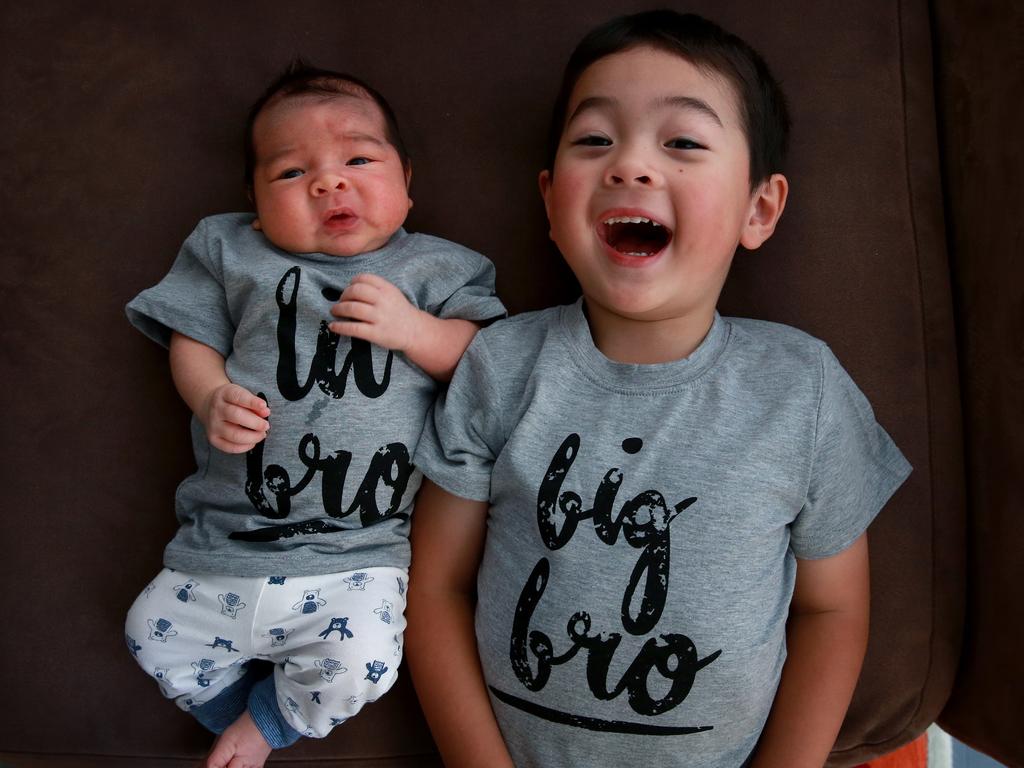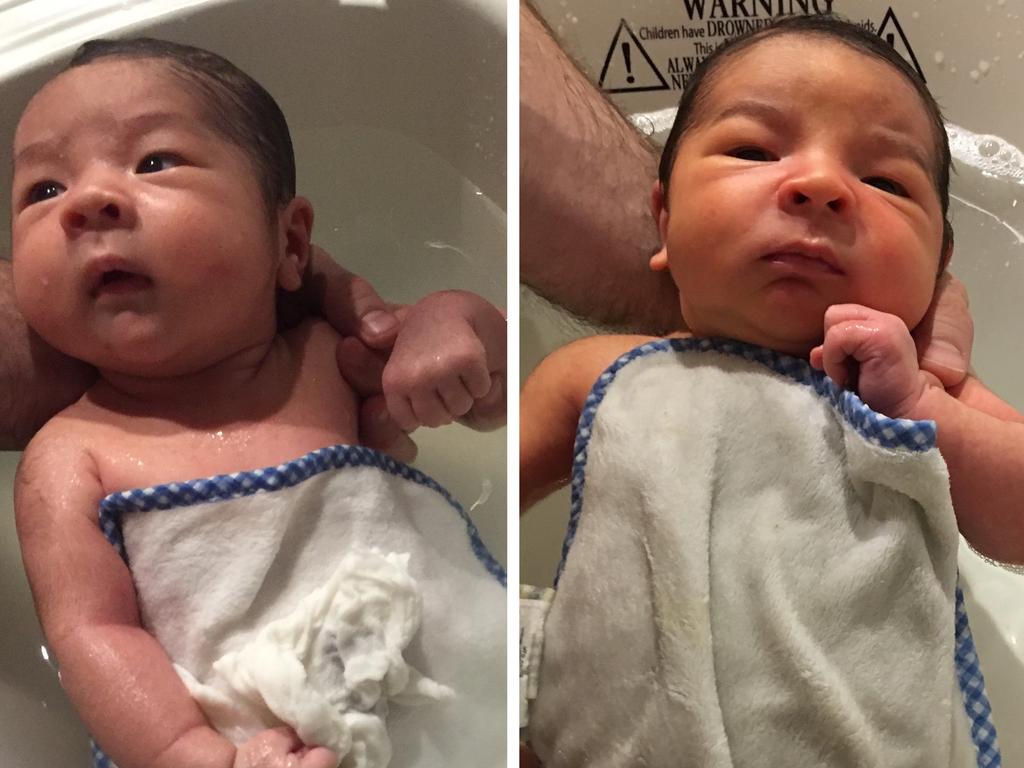‘Twins’ conceived at same time but born three years apart via IVF
Owen and Riley Hicks’ newborn photos are so astounding in their likeness, they could be twins — and technically they are. The Sydney tots were conceived at the same time from the same batch of eggs and sperm but were born three years apart.
Owen and Riley Hicks’ newborn photos are so astounding in their likeness, they could be twins and technically they are, but the Sydney tots were born three years apart.
Mum Joanne has dubbed them “twiblings”.
“I use the term twiblings because, they are siblings but because they were conceived at the same time and frozen together (as embryos) so they are more like twins in my mind,” Ms Hicks, from Waterloo, said.

Until recently, the majority of IVF siblings have been born from separate stimulated IVF cycles, but better technology in recent years has led to an increase in “twiblings”: embryos created at the same time in the lab from the same batch of eggs and sperm.
An embryo is then transferred into the mother, the rest are frozen and transferred at a later date. Twins born years apart.
MORE FROM JANE HANSEN:
RESEARCH MAKES YOU A VACCINATION EXPERT. NOT GOOGLE
DIABETICS GET TATTOOS INSTEAD OF MEDICAL BRACELETS
Genea scientific director Steven McArthur said new technology had led to a rise in “twiblings”.
“The standard was one baby from one stimulated cycle, but what we have seen in recent years is an increase in patients who have been able to achieve more than one pregnancy from a single cycle,” Mr McArthur said.



According to the latest report “Assisted reproductive technology in Australia and New Zealand 2016”, IVF success rates have improved to the point one in four embryo transfers result in a live birth, with one in every 25 births an IVF baby.
The proportion of embryos cryopreserved, or frozen for future use has grown from 7 per cent in 2012 to 22 per cent in 2016.



Technology like Geri, an Australian designed incubator that photographically monitors an embryo’s development in its own compartment in the crucial first five days.
Prior to Geri, assessing embryos involved opening the incubator to remove each embryo for inspection, compromising the stable environment needed for optimum development for that embryo and others in the same chamber.
“The conditions they are grown in now are very stable, we are trying to mimic the fallopian tube and uterus in those first few days with less interference.

In Ms Hicks’ experience, her IVF cycle five years ago retrieved 20 eggs, 13 of which were fertilised.
Six embryos made it to day five, one fresh embryo was transplanted at that point which did not result in a pregnancy. What would become Riley and Owen were frozen. A month later, a frozen embryo was thawed and transferred and Riley was born nine months later.
A month ago, Ms Hicks gave birth to Owen at the age of 41.
“They are the same age in a sense, because they were created at the same time, but Owen has been frozen for three years,” Ms Hicks said.
“The science it just incredible and we feel so lucky and grateful to have our family, it was hard, but a good process.”


